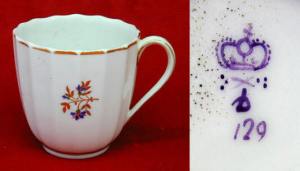Monthly Archives: November 2012
Faux Pearls or Real? The Tooth Test
 Have you heard that you can tell if pearls are real by using your teeth? You probably heard it from your grandmother or great aunt. Is this an old wives’ tale?
Have you heard that you can tell if pearls are real by using your teeth? You probably heard it from your grandmother or great aunt. Is this an old wives’ tale?
 Nope, it’s true. Real pearls rubbed gently across your teeth will feel a little gritty. A caveat though. (Isn’t there always one?) This can be hard to tell without having fake pearls for comparison.
Nope, it’s true. Real pearls rubbed gently across your teeth will feel a little gritty. A caveat though. (Isn’t there always one?) This can be hard to tell without having fake pearls for comparison.
Get some pearls you know are fake or some other beads made of glass and rub them across the biting edge of your top teeth. They will feel smooth. Then try the mystery pearls. If they feel the same, they are most likely fakes. Or faux, as today’s sensitive marketplace prefers. If they feel gritty by comparison, they are most likely genuine.
Another clue: check the clasp. If it is real gold (marked 14K or similar) or platinum, the pearls are likely genuine. No one puts cheap clasps on real pearls or expensive clasps on fakes.
If you still can’t tell, take them to a reputable jeweler–he or she will identify them for free. Most jewelers can arrange for an appraisal if you like, but you will have to pay for that service.
Pottery Marks: Dishwasher Safe
 Have you heard the myth about the origin of the word “china?” An auctioneer told me that he first heard this from his father, also an auctioneer, and that he repeated it himself for years. Then he looked into the subject and learned it wasn’t true. The myth goes like this: The reason people today call dishes china is because after the 1890 tariff act, dishes imported into the U.S. were required to have a mark indicating country of origin. Since most of the dishes came from China and were marked “CHINA,” people started referring to all dinnerware as china.
Have you heard the myth about the origin of the word “china?” An auctioneer told me that he first heard this from his father, also an auctioneer, and that he repeated it himself for years. Then he looked into the subject and learned it wasn’t true. The myth goes like this: The reason people today call dishes china is because after the 1890 tariff act, dishes imported into the U.S. were required to have a mark indicating country of origin. Since most of the dishes came from China and were marked “CHINA,” people started referring to all dinnerware as china.
Not exactly. The general term was in use long before 1890. Historians know that because it is common to see the word china in inventories dating back to the 18th century at least. But the word can help you date your piece of china, because it shows that it was imported after 1890 and is not, for example, an 18th-century piece. But it is true that, as Chinese-export porcelains came into Europe in the 1600s and as Europeans tried hard to figure out the mystery of this lovely, translucent ware and make it themselves, the English began referring to all porcelain-like ceramics as china, even when the stuff was produced in France (Sevres, Limoges), Germany (Meissen), England (bone china), or other countries.
Generally speaking, the more wordy information stamped on the back of a piece of china, the younger it is. If it says “Dishwasher safe,” it isn’t very old. (Don’t laugh. I remember getting a letter from a woman who had a handmade pottery mug with the inscription “1776 — 1976” on it, and she was wondering how much it was worth, since it was obviously more than 200 years old. It did say 1776, didn’t it?)
But there’s no need to guess. There are plenty of guides to pottery marks in your library or on line. Like these:

